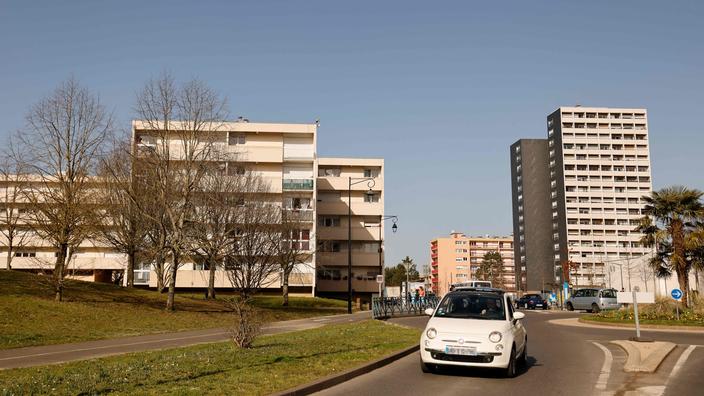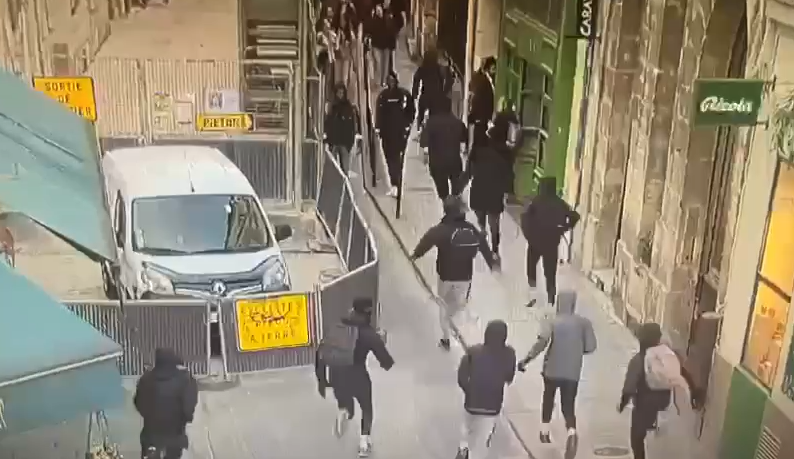Bahran El Fakhar, social mediator in a sensitive city of Yvelines, was walking in the street when he saw a dozen teenagers heading towards the station, baseball bats in hand, ready to do battle.
They weren't very old, maybe 13 years old.
And among them,
"nice kids", "good students, jovial",
says the mediator.
He intervenes, asks them what they plan to do.
“By talking, by forcing them to verbalize, I let the adrenaline go down.
But this kind of group effect leads to scenes of incredible violence
,
”
he continues.
To read also: In Essonne, "one has the impression to live in an increasingly violent society".
The gang war claimed new victims on Tuesday February 23 after the death of two teenagers during brawls in Essonne.
At the forefront of these outbreaks of violence between minors, social mediators try to defuse conflicts before the provocations turn into drama.
“
For a year, there have been more and more brawls.
The slightest conflict takes on impossible proportions, involves ever larger groups.
We try to open our ears to detect explosive situations ”
, explains to
Figaro
Abdel Kebir Effaki, educator in Melun.
“You have to pay attention to the slightest insult from a rival group, girls' stories, racketeering cases, which can degenerate into retaliation between neighborhoods.
"
“One says: 'We are going to come with iron bars', the other replies: 'We have knives'.
They do not distinguish fact from fiction ”
Azdine Rezaï, social mediator in Cholet (Maine-et-Loire)
Insults, provocations, misunderstandings: brawls between adolescents, far from settling scores between major delinquents, often arise out of futility.
Then social networks act as an accelerator and sometimes overtake mediators.
"Everything is organized on TikTok, Instagram, and we often arrive after the train
", regrets Abdel Kebir Effaki.
One day is enough for a situation to degenerate.
Azdine Rezaï, mediator in Cholet (Maine-et-Loire), remembers a love affair that sparked off in the space of a few hours a brawl involving around forty young people.
“Everything was organized on social networks during the course day.
The case was blown up and we ended up with two classes who had arranged to meet on the football field at the end of the lessons,
”he says.
“I managed to be there on time and take the two boys involved aside.
The situation had overtaken them a little.
And yet, he adds,
"a knife, a stroke of the compass, and we end up with wasted lives."
To read also: War of the gangs: Internet, catalyst of violence
When do the insults behind smartphones end in the blood?
“We are dealing with kids who are entering an escalation of violence.
One says: “We are going to come with iron bars”
, the other answers: “
Well, we have knives”, and so on
, ”continues Azdine
.
“
Sometimes it seems like they don't distinguish between fact and fiction.
"
Streamline the situation
The challenge for this mediator is to rationalize.
"But do you really want to spend your life scarred, to make your mother cry just because Mohammed's cousin's cousin insulted your boyfriend?"
Is it really worth it? ”He
repeats to the young people.
Many educators witness a sort of disconnection from gratuitous violence.
"Faced with unbearable scenes, for example, of a dozen teenagers who beat a person on the ground, they answer me: 'We did not think that it could kill him" "
, Bahram notes.
“I try to act upstream.
I tell them concrete stories of wasted lives to create a trigger.
There is a real need for education in violence, ”
continues the Ile-de-France mediator.
Read also: The Île-de-France region is sinking into delinquency
It is still necessary to be able to open a discussion.
Yazid Kherfi, founder of the association “Nomadic Mediations”, goes from city to city to help municipalities fight against urban violence.
Two out of three times, he is called for problems of brawl between rival gangs.
“The idea is to talk to the leader of the band.
It is often the strongest, the one who speaks the loudest.
We take him aside, we recognize him as the leader in order to obtain his cooperation, then I challenge him to go and explain himself to the rival gang.
The challenge is to transform violence into conflict,
”he explains.
At night, theater of violence
It is at night, when the streets empty, that violence occurs.
“During the day, these young people are invisible.
But in the evening, we manage to find isolated young people, those who risk getting out of hand
,
”
continues Yazid Kherfi.
“I explain to the municipalities that we must occupy the space at night.
There must be open places, with adults supervising.
If their family situation does not allow this, it is necessary to put in place structures so that these children have references.
"
Read also: Delinquency, criminality, insecurity: priority neighborhoods increasingly affected
Mediators agree to play this role, but it is not enough.
“We also need sanctions.
I don't believe in “cuddle therapy”.
To say that we did not know is no excuse.
We must sanction leaders and empower.
Prevention does not work without sanction, and vice versa, ”
adds Barhan El Fakhar.








